~Tom the Bomb
Welcome to the PRU, circa 2241 CE.
(images taken from Writers Guide and some dude's blog page. Map taken from atlasoftheuniverse.com and altered for my nefarious and dork-fueled purposes)
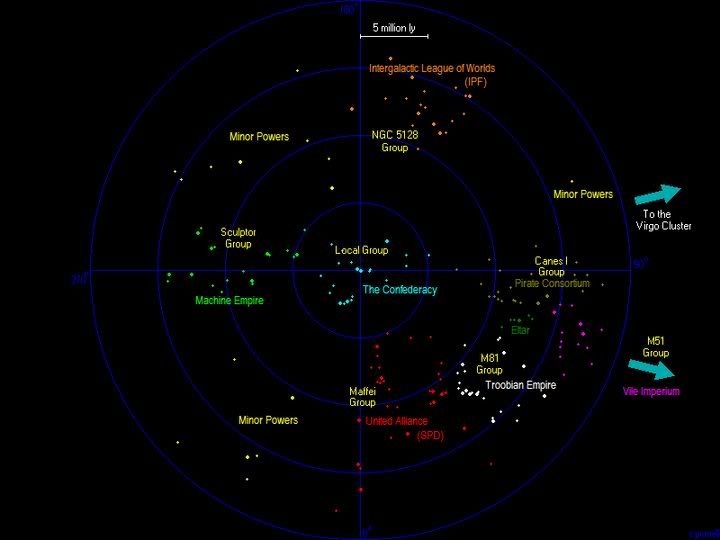
Full version: http://img19.imageshack.us/img19/8186/galaxyl.png
Worlds of the Confederacy
Situated in and around the Local Galactic Group, the Confederation of Systems is one of the central hubs of trade and commerce in the Local Supercluster. Surrounded on all sides by rival powers both friendly and antagonistic, and split by deep political divisions, the Confederacy finds itself in a vulnerable position.
The Confederacy traces origins back to the late twentieth century. Many of the member worlds had pre-existing treaties and alliances before and after the Dark Specter War. After the war, the surviving powers of the local group banded together to protect themselves from another invasion by other. In the early twenty-first century they were approached by the United Alliance and its military-police arm, Space Patrol Delta. The Alliance, after having suffered a serious defeat at the hands of the Troobian Empire (leading to the destruction of the Alliance’s capital, the world of Sirius), opened talks with the local group alliance over the possibility of being integrated into SPD. The local group would get the much-needed protection from outside threats, and the Alliance would get the manpower and resources needed to fend off its own enemies. A number of local group worlds signed on; Earth, Aquitar, KO-35, and Triforia, followed by a number of lesser worlds.
For the next two centuries SPD coexisted with the local group, acting as both a domestic security and a military force. However, by the early twenty-third century cracks had begun to form within the once-tight alliance. A number of worlds began to become more and more distasteful of the Alliance and SPD, citing that SPD was less concerned about their wellbeing and more concerned about just protecting itself. The worlds of the local group found themselves ignored by the Alliance in all matters except resources and manpower, which the Alliance used to wage wars of conquest on other alien powers such as the Machine and Troobian empires. Further aggravating the situation was the fact that SPD had slowly stripped the local governments of virtually all real power. The police and ranger forces were under SPD command, and each world was only allowed a token defense force. To make matters worse, the Alliance had begun interfering in local politics, claiming it was for the stability of the region. A number of worlds began resisting SPD encroachment, leading to a number of ill-fated rebellions. The Hydro-Contaminators were wiped out in 2213 when an SPD fleet bombarded their homeworld from orbit, claiming that they had become an ‘internal threat to the stability of the alliance’.
Another such ill-fated rebellion was Earth’s Alphabet Soup thinktank, a covert organization backed by the UN and the nations of Earth in a last-ditch attempt to create their own means of combating SPD. Unfortunately one of their projects, the Venjix computer supervirus, was accidently unleashed on the populace and within three years conquered the entire planet and rendered it an uninhabitable husk, with the only surviving population residing in highly defended dome cities. SPD forces, after a token resistance, packed up and left within the first year of the war—allowing for a number of front lines to crumble under the machine advances. They then proceeded to seal off the system to all travel, quarantining it under penalty of death. It was this act that rallied the other major worlds of the local group into action, claiming that SPD had failed to live up to its promise. Mirinoi, Earth’s oldest colony world, seceded from the Alliance on April 7th, 2235. It was quickly followed by other Terran colonies and Earth’s allies of Aquitar, Triforia, Horath, Xybria, and the Karovan Republic. Now faced with a full-scale civil war on its hands, the Alliance mobilized SPD’s reserves and a bitter two-year long war erupted. In the end, the Alliance was forced to retreat due to a number of other wars it was also busy fighting, including another war with the Troobian Empire. It was reluctantly forced to recognize the independence of the local group worlds.
On September 21st 2237, the worlds of the local group formally ratified the Articles of Confederation; bringing the Confederation of Systems into existence. The ceremony was held on KO-35, the capital of the new political entity. The Confederacy was designed to be a defensive alliance against outside threats, but it lacked much of the cohesion SPD had employed. There was no SPD equivalent organization, and instead each world was responsible for the creation of its own military force. In addition, the Confederacy enacted an alliance-wide ban on superhero military programs. State-sponsored ranger and rider teams were disbanded and even civilian teams (rare as they were in the immediate post-SPD climate) were discouraged and any active were put under heavy surveillance. Likewise, the Rider Corps were only allowed limited operations within Confederate borders. It was a complete 180 for a region that had historically been one of the hotspots for powered heroes to operate in.
For the past four years, the Confederacy has been limping along. It is hindered by its own structure; each member faction is defacto independent of the others and all of them inherently distrust any idea of a cohesive alliance. That, combined with the absence of ranger activity has left the region with a serious crime problem, with pirate clans moving in into the voids between member factions.
The Confederate governmental structure consists of only one branch, the Confederate Assembly. Located on KO-35, members of the Assembly are elected by their respective homeworld governments and are responsible for debating matters of external policy and some limited internal matters that affect more than one party. All local affairs are tended to by the local governments of each member. Due to the fact that all bills passed before the Assembly have to be unanimously agreed to by all member worlds, the Confederacy remains crippled by politics and internal schisms, making it a weak and vulnerable target. Rival powers eye the faltering Confederation hungrily, waiting for their chance to strike, the most vigilant being the resurgent Alliance.
The Confederation of Systems currently has seven members; the Karovan Republic, the Terran Alliance, the Aquitian Republic, the Triforian Empire, the Horathean Kingdom, the Xybrian Collective, and the United Tenga Colonies.
The Karovan Republic
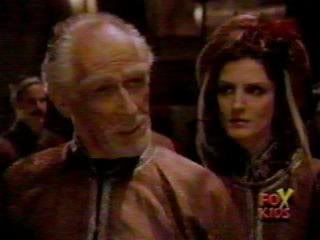
The centerpiece of the Confederacy is KO-35 and its surrounding colony worlds. The Republic lays claim to over four dozen colony systems across the Milky Way Galaxy and the Large Magellanic Cloud, and another two dozen systems contain mining operations or outposts of varying size and importance. The Republic is one of the Confederacy’s major powerhouses and alongside the Terran Alliance and Triforian Empire makes up the bulk of the Confederate military forces.
KO-35 itself, also affectionately known as ‘Karova’, is a highly urbanized planet, which has been on a constant buildup since the Dark Specter War. It serves as one of the major hubs of commerce and trade, as well as one of the major industrial and manufacturing worlds of the Confederacy. It is a very wet world; over eighty percent of its surface area is covered by ocean, and the small continent and surrounding island chains that make up the planet’s landmass is covered in rainforest and swamps—though a large plain dominates the central plateau.
The Karovans arrived in this corner of the universe about a thousand years ago onboard a massive sleeper colony vessel. The Karovan homeworld had been facing imminent destruction at the hands of an evil alien empire, and launched a large number of sleeper ships in all directions once it became apparent that they could not hope to win the war. The ship that arrived in orbit of KO-35 happened to be the only one that arrived in the local supercluster. To this day, Karovans have no idea where their brethren may have colonized, though their former homeworld is believed to be somewhere in the Fornax cluster, over 60 million lightyears away from local space.
Since the colonization of KO-35, the Karovans quickly expanded to become one of the dominant powers of the local group. They made major diplomatic inroads, building alliances with the Triforians, Aquitians, and Eltarians in the years before the United Alliance of Evil came to power. When the UAE began to invade local group powers near the end of the twentieth century at the behest of Dark Specter, the Karovan Republic was one of the first to come under attack due to their status as an actual threat to Dark Specter’s plans. Despite a valiant resistance, the republic was overrun by enemy forces and the Karovans were forced into hiding in an event known now as the Exodus. Taking refuge on oftentimes hostile planets, the Karovan refugee colonies hid from the UAE forces until the Dark Specter War reached its climax in late 1998, at which point the rebellion fought in several major engagements alongside its allies and Earth. After the war, the Karovans resettled on KO-35, rebuilding their world and eventually their network of colonies. KO-35 became a heavily urbanized world, the most in all of future Confederate space. Its considerable industrial and military might was instrumental in the rebellion succeeding against SPD forces during the civil war.
In large part due to the Exodus, Karovan culture is very much dependant on the community. The individual services the town, the town services the province, and the province services the republic. In Karovan society, the needs of the individual are subservient to the needs of the state. Abnormalities and individualism are discouraged and looked down upon as they threaten the stability and smooth-running operations of the community. As such, the Karovan economy is fairly socialist in nature, with most major industries controlled or at the very least heavily regulated by the government. Likewise, the very rigorous Karovan schooling program is also very focused on the needs of the state, with individuals moved around from program to program to maximize their strengths so that they may serve the community to the best of their ability and in the field that they are most able to perform in.
Karovans are also very dependent on their technology. Simudecks, Synthetrons, AIs, and teleportation are all fundamental aspects of Karovan lifestyle, and many even augment themselves with varying amounts of technology, ranging from simple communication and cybernet accessors to full-on cyborg enhancements. This, combined with the Karovan natural ability to train oneself to acquire skills of telekinesis makes them far stronger than they look at first glance.
Being a highly secular people, active Karovan belief systems are negligible, and those who do believe in something are part of a foreign religion—native Karovan belief systems are virtually extinct. Those that did exist at one time however, are shown to be very much like Earth’s dominant religions, ranging from polytheistic to monotheistic.
Karovan military has gone undergone a large overhaul since the war, due in most part to a change in military tactics and strategy. A key portion of the Karovan military force had always been the use of rangers as shocktroops to soften up the enemy for the deployment of infantry backed by mobile defense platforms. With the ban on rangertech however, the Karovan military has had to rely more on mobile strike craft, focusing on tanks, mobile platforms, and miniature mecha derived from zord tech to assist infantry divisions. The fleet on the other hand, remains mostly untouched. The Karovan fleet consists mostly of small but highly powerful and maneuverable vessels. Karovan technology is compact, allowing for such small, streamlined vessels to be powerful enough to take on far larger targets. These ships usually work in swarms, outflanking the enemy at point-blank range before overwhelming them in numbers. Due to their size, Karovan vessels forgo fightercraft, though all colony worlds have their own defense squadrons in case of attack.
One major subset of the Karovan fleet are a number of Megaship classes—vessels designed for both ship to ship combat as well as having an alternative Megazord mode for ground combat. While rangertech is banned to military service within the Confederacy, there is no such ban on zordtech, and so the Republic continues to use it as it has for centuries.
The Terran Alliance
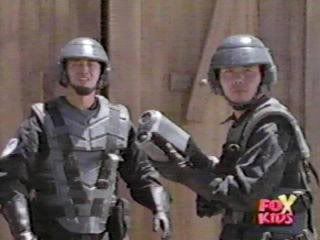
The Terran Alliance consists of the loose network of over five dozen colony worlds at one time claimed by Earth before its fall. Now led by the planet Mirinoi, the alliance is one of the lead powers within the confederacy, matching up against the Karovan Republic and Triforia in terms of power. Located in the Eurolian galaxy, a dwarf satellite galaxy of the Milky Way, Mirinoi was the first colony world of Earth, established in 1999 in the direct aftermath of the Dark Specter War. Mirinoi is a mostly forested planet, with very few areas of the landmasses consisting of plains or deserts. Due to the warm temperatures of the planet, it has no polar icecaps.
Prior to contact, the native people of Mirinoi were a mostly tribal people, though a few bronze-age civilizations had emerged in the southern hemisphere. In 1999, the Terran colony vessel Terra Venture made an emergency crash landing on Mirinoi, and the population of the vessel decided to colonize it instead of their original destination. Due to good fortune, a semi-stable wormhole linking Earth and Mirinoi space was discovered and allowed for goods and people to be easily transmitted from one to the other, giving the Mirinoi colony the chance to grow quickly. The population swelled, and soon a number of brand new cities dotted the northern continent. However, despite it all Mirinoi remained independent of its parent world. Within a decade, four more Terra Venture-class vessels were commissioned by NAS
During the first two decades of the twenty-first century a number of small-scale wars were fought between many of the native cultures and the colonial government, the heaviest fighting occurring against the southern Bronze Age kingdoms. The native Mirionites quickly adapted to colonial weaponry, causing the wars to become even bloodier. SPD stepped in eventually at the behest of Earth, and successfully negotiated a cease fire and a compromise that allowed for the continued existence of both populations. Eventually the native cultures were assimilated into the rapidly expanding colonial culture, though many aspects were adapted by the colonists.
Terran culture is an almost diametric opposite to Karovan culture in a number of ways. While the Karovans are a technologically sophisticated and socialist culture, Terrans are both far more capitalistic and more wary of becoming too dependent on technology—in particular inventions like the Synthatron are forgone in favor of farming. Mirinoi in particular is a very ecologically friendly world, due in large part to the native Mirionite culture, and as such large parts of the planet remain mostly untouched by urbanization. Terrans are also inherently more individualistic than their Karovan counterparts, their society bowing to the wishes of the individual rather than the other way around. Many of the major corporations that are based within Confederate space are based on Terran colony worlds, and trade fuels their economy rather then raw industry like the Karovians.
Another difference between the two cultures is religion. While the Karovans are a highly secular people, Terran (and Mirionite) religion is diverse and common. Common Terran belief systems include the mainstays of Buddhism, Christianity, Islam, as well as a fair number of less popular old world religions. Mirionite religions range from animistic and shamanistic to outright polytheistic pantheons originating from the old Bronze Age civilizations. One unique case that began to spread rapidly when the colonists landed was the cult of the Galactabeasts. While already in existence before Terra Venture landed in 1999 thanks to the existence of the Quasar Sabers. When the colony brought with them the Galactabeasts themselves, many tribal cultures began to worship them. While it has since died down, many tribes that have not been integrated into the colonial culture continue to worship them.
The Terran Alliance is a very loose entity, only linked together by the Alliance Council, which comes together once a year (or under special circumstance) to debate and make decisions regarding trade and policy. That said, Mirinoi has considerable clout compared to the others, and over the last few years has begun solidifying the alliance with itself as the head now that SPD is out of the way.
Terran foreign policy is fairly militaristic, making it one of the most powerful Confederate members in terms of military might—though that is offset by the relative disorganization of the alliance which keeps it from focusing all of its power at once. Terran forces forgo small and agile ships in favor of large, powerful carrier ships capable of fielding hundreds of fighters. Rather than attempt swarm tactics and knife fights, Terran carriers tend to take up a central position within the battle theater and deploy fighters and cruisers to where they need to be, using the carrier as a mobile base of operations. Terran combat leans towards multitasking and quick hit-and-run blitzkrieg strikes.
The Aquitian Republic
Aquitar, located in the Andromeda Galaxy, has a surface area almost ninety-five percent covered in water. There are only a small handful of island chains that exist above the sea level. As such, most life evolved under the ocean, giving rise to a highly diverse and complex planet of sea life. The Aquitians themselves are descended from an amphibious-like creature now extinct. They are among the older races of the supercluster, measuring in at several million years of recorded history.
Much of early Aquitian history involves many different city states, each based out of a different underwater citadel—the most powerful being located near the island chains where fresh air was readily available. The Aquitians, due to their environment, advanced very slowly technologically. At some point however, they began dabbling both in primitive biotech and crystalline tech. This, combined with the taking advantage of underwater vents as a renewable power source eventually propelled the Aquitians to a technologically advanced state. They began to explore space and expanded rapidly, initially being very militaristic and warlike. Most existing Aquitian colonies come from this distant time, the biggest being the planet of Gratha.
Over time the Aquitians became less warlike. Prior to the SPD Civil War, the last time the Aquitians had raised a true military force had been the great war three thousand years ago, and that had been a mere token force. Since then the Aquitians have remained fairly isolationist. The only major exception was the Hydro Contaminator war circa 1996, when the Hydro Contaminators briefly invaded Aquitar due to trade grievances.
Modern Aquitian cities are all located on the sea floor. Each is grown from a number of plant species that the Aquitians have bioengineered to fulfill their needs. The bioengineered plants and fungi coalesce into a singular structure, which is described by offworlders as ‘pods’. They allow the Aquitians dry living spaces with plenty of fresh air and the ability to control how much water gets inside for their needs. The interiors of Aquitian cities and their computer databases are based on crystalline technology which in turn interfaces with and augments the biological exterior—in essence a crystalline cyborg.
Aquitian culture consists of classes, but not in the traditional way. Almost all of the population belongs to the layman class, which oversee most jobs and occupations in society. However, there exists an elite class which consists of government officials and priests. Members of this class are the only ones allowed access to the Eternal Falls, fountain of youth-like monument located on one of the southern islands. Larger and higher than six Niagara Falls, the Eternal Falls are the nexus of the life-force charging element that surges through the Aquitian seas, which are required for Aquitians to live. Due to the high concentration of this element however, at the falls any effects of aging can be reversed. Indeed, it is possible for someone to become effectively immortal if they are allowed continuous treatments of the water. The elite class is allowed regular access to the falls, and thus its members are effectively immortal, many having been around for thousands of years. In Aquitian culture, those elected into government and religious positions are valuable. The more they are re-elected, the more valuable they become. Thus, they are given access to the Eternal Falls for as long as they remain in office.
Aquitian religion is deeply engrained in the culture, but it is also fairly abstract. They don’t all believe in a particular got or set of gods, but moreso worship the universe itself. In some senses their religion is similar to Buddhism, with much of their spirituality focused on ascending from the current plane of existence and breaking the cycle of reincarnation. The healing aspect of the water on their world is another major factor in their religion and traditions, and the idea of an underlying lifestream or energy encompassing the universe is a popular one.
In some respects Aquitian society still relies on the concept of the city state. Each planet is divided up into provinces focused around each major city. Each city is allowed representatives to the Planetary Council, which then sends representatives to the Republic Council.
The Aquitian fleet is a rare sight. Even since its recreation as of the SPD Civil War, it remains a fairly small force that protects only the colonies and the homeworld. Aquitian ships tend to follow the Karovian idea of small, agile ships in swarms, though there are a few larger vessels. Like Aquitian cities, ships of the fleet tend to be partially biological in nature, as evidenced by their smooth, blue-green hulls and their almost fish-like shape.
Aquitian ground forces are virtually nonexistent, though up until the Civil War they were protected by a ranger team. The Aquitian Rangers were a highly revered group who had been given their powers by Ninjor millennia ago. They were within the elite class, and thus had access to the Eternal Falls. In order to allow for the Confederacy to be ratified into existence however, they stepped down from their positions and retired.
The Triforian Empire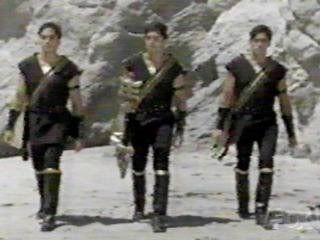
Established five thousand years ago, the imperial Triforian dynasty has been the single uniting factor for the people of Triforia, otherwise a wide hodgepodge of cultures and principalities. It came into existence when the golden powerstaff was discovered by Lord Trikon of the Heruer Mountains within a vast cave network. The staff had been hidden away there by monks from the M51 galaxy thousands of years before, and placed under a protective spell. Using its power to transform him into the gold ranger, Trikon embarked on a massive campaign to unite his world under one banner in an effort to end the constant fighting that had been ravaging his world. He ushered in an era of unparalleled peace and prosperity, and when he died he passed on his powers and his throne to his eldest son. Since then the Lord of Triforia has also been the gold ranger, guardian of Triforia.
A mostly desert planet, Triforian society grew up around the small seas that dotted the planet, as well as the fertile rivers that fed them. Up until Trikon’s campaign, the world had been divided into small and petty citystates and larger empires that were depriving other areas of precious water in the hopes of controlling those areas. Thanks to the gold ranger powers and the zord Pyramidas, the technological level of Triforia jumped overnight. Within a millennia, Triforia’s technological level had reached that of an interstellar civilization, and began to expand to nearby plants, harvesting resources such as water for the homeworld.
Since the Civil War, the current Lord of Triforia, Lord Anati, has been forced to put away his power staff, acting in accordance with the Confederacy’s ban on ranger tech. However, Anati has made his opinion very clear that he thinks the ban is a mistake, and there have been unconfirmed sightings of the gold ranger protecting the people of Triforia. These sightings have been denied by the imperial office.
Triforia reveres its Lord, though heavy burdens are placed on him or her. The Lord of Triforia must be more then a distant figurehead; he or she must be a guardian for the people, protecting them from harm through any means necessary. The Lord must be a person of unquestionable honor, and if the populace finds an heir unworthy, they are not shy to make their voice heard. Some Lords, such as the legendary Lord Trey, were known to go beyond the call of duty and assist other planets during periods of peace and prosperity. The Lord is almost seen as a god, and at some points in the distant past was. At the very least, he rules through the mandate of heaven, the idea that the gods allow him to rule and if they decide he is no longer fit, they allow for him to be removed.
However, the Lord of Triforia is not the sole ruler of his or her domain. In order to maintain his empire during his conquests, Lord Trikon created a council of advisors. Over time it became the Triforian Parliament, the democratic counterpoint to the Lord of Triforia, and a way for the government to continue even when the Lord was on a mission offworld.
The central idea to Triforian is the number three. As Triforians are composed of three separate beings, the idea of the trinity is deeply engrained in their culture. Triforians eat three meals a day. They sleep nine hours a night. Floors of a building are often numbered by numerals of three. The number two is considered to be unlucky, as it is one less than three, an incomplete circle. Even religion is focused on the number three; the primary religion of Triforia is known as Trinitas. The central god of Trinitas has three subset personalities, reflecting the three that comprise one Triforian. In turn, each of these three gods in turn have three subset beings within them, signifying their god’s divinity.
One heretical sect of Trinitas, Souls of the Triad, are known to be able to split into their three forms and recombine at will. They have trained themselves into being able to perform this dangerous maneuver, despite the protests from the orthodox church that splitting oneself should only be performed as a last-ditch effort to save oneself, as it is both dangerous and a sin. Those following the Triad are recognizable due to their ornate arm tattoos.
Triforian food is known for its diverse and intense spices, a remnant from a time when spices were the only way to keep food from rotting and to keep some sort of taste.
Located in the Triangulum galaxy, Triforia is the third most powerful force in the Confederacy, behind the Karovans and the Terrans. Their fleet commands large pyramid-like vessels from which hundreds of three-pronged fighters launch, with Pyramidas as the flagship. In this way they are very much like the Terrans in fleet operations; using their pyramid warships as a base of operations for their fighters and smaller warships. On the ground, Triforians augment ground troops with fast-moving air cycles and jet jammers, as well as other light and fast ground vehicles.
The Horathean Kingdom
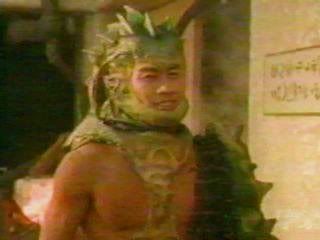
Located in the NGC 3109 galaxy near the edge of the local group, Horath is a desert planet like Triforia. However, it is actually far less habitable then it. Only a few people still live above the surface, in mostly nomadic tribes. The vast majority of Horath’s population lives below ground, in the massive cavern systems that permeate the planet. Some are large enough to fit whole cities inside—and do.
Horath’s earliest civilizations were those that hung tight to the few small oases that existed. At some point however, the people of Horath found the entrances to the caves, and began to move down there, where water was plentiful and where light from crystalline sources made plant life possible. Many caves are actually large enough that whole ecosystems can form, with the water condensing on the cave ceiling before falling again as rain. Some of the biggest caverns even contain entire rainforests.
While the people on the surface retained a nomadic style of life, the subterranean Horatheans quickly became an industrialized civilization. Thus, Horath ended up with two very different but interactive civilizations; the subterranean urbanized civilization, and the surface-based nomadic tribes. However, both remained the same in many respects.
Horathean civilization is feudal in nature. A lord of a region has vassals who in turn also have vassals. Land is leased to lesser nobles, not given. Only the king of Horath actually owns the land, but as he is in a feudal society, he as no real control over anything other then to summon his immediate vassals to his service. In fact, it is not unheard of for lesser vassals to rebel against or overthrow a king.
In addition to being feudal, Horathean culture, especially on the surface, is mandated by the ideal of the warrior and codes of honor. The more powerful yet honorable warrior you are, the faster you may rise through the ranks. Society is very complex, with many different rules and nuances depending on the region of the planet one might be in. A naïve misstep could result in one’s untimely demise. Courts of law also depend on the region; some are very familiar to more modern democratic denizens, while others retain a more tribal feel. One particular favorite involves the slaying of a desert beast in order to prove ones innocence.
There is no one Horathean religion. Each region has its own pantheon and way to worship its gods. However, most of them are slanted towards honor and the path of the warrior due to the culture they find themselves in. There are literally thousands of gods in Horathean religion, ranging from the main members of any given pantheon to minor cave and desert spirits. Ancestor worship is also common, as any ancestor can ascend to godhood or at the very least become a powerful spirit. Kings of a region are venerated as powerful spirits, and are worshiped by later kings, who ask favors of them.
Horathean culture is filled with rituals, ranging from offerings for the gods and asking for assistance to coming of age trials.
Horath would easily be one of the powerhouses of the Confederacy if it were more united. As it stands however, the armed forces of the Kingdom are highly disorganized and quite primitive in comparison to the other major powers of the Confederation. Horathean ships forgo agility in favor of many massive guns and armaments covering every inch of their blocky, green hulls. While the fleet employs some fightercraft, it is mostly used as a defensive screen rather than any sort of offensive force. Horathan strategy simply calls for Horathean ships to pound away at the enemy at long range. Ground forces are almost entirely infantry-based, keeping with the warriors code of honor.
The Xybrian Collective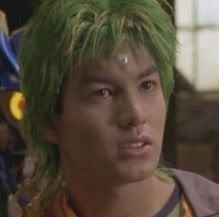
Located in the distant and isolated Tucana Dwarf Galaxy, the Xybrians are relative newcomers to the supercluster scene. A psychic species, the Xybrians have a limited hivemind mentality, as everyone can hear everyone else’s thoughts. Though free will exists and is encouraged, the idea of lies and deception is an alien concept to these people. Due to their nature, before making contact with other races, the Xybrians had never fought a war. The first species the Xybrians encountered were the Varox, who took advantage of their naivety and sacked their world. An SPD taskforce was on the Varox’s tail and managed to curtail their operations on the planet, before offering the Xybrians an alliance. The Xybrians eagerly took the offer out of fear of being attacked again, becoming members in the Alliance.
During this time, the Karovans, and later the Terrans, took the Xybrians under their wings, forming local alliances with them. When Earth was abandoned by SPD forces just before the start of the Civil War, Xybria stood with her allies in the local group, confused and infuriated that SPD lied to them just like the Varox had.
The Xybrians are by necessity a very interpersonal species, placing very high emphasis on the community as a whole. However, unlike Karovan society, Xybrians are far more ‘free range’, allowing for a very stubborn individual streak. People are allowed to follow their passion, as long as it has a practical use within the community.
Psychologically, Xybrians are one of the healthiest races of the supercluster. This is probably due to their psychic link with the collective, allowing for rapid and accurate assessment of one’s psychological state. As there are no secrets in Xybrian culture, trust is easily earned and everyone is considered a close friend. The downside of course, is that the Xybrians are almost ineptly naive when it comes to the fact that other alien races do not follow their rules, and it is almost impossible for them to comprehend the idea of secrets or deception, even after over a century of contact with the outside.
Xybrians practice a form of ancestor worship. Not so much worship as veneration; when a Xybrian dies, the collective memories and personality of that person remain within the Xybrian hivemind, remembered by all who knew him or her or who have had the honor of having the memories transmitted to him or her. Eventually, the memories spread throughout the collective and dim before vanishing, at which point it is said the person has fully reintegrated into the hivemind, so that more can be born.
Some Xybrians have precognitive abilities. These few people are considered to be blessed by the ancestors, and are given great respect by their peers. In time, those with this ability can be trained to hone it so that they can control it, as opposed to just receiving random flashes. However, this is a very long and intensive process.
The Xybrian has a very limited government, a Senate used for confirming agreements made by the hivemind, as well as for ambassadors to reveal what they have found while abroad. Xybrians also have virtually no combat forces, except for a few squadrons of Terran-built fightercraft for defense purposes. The Xybrians have also never expanded beyond their homeworld, preferring to live where they were born. To Xybrians, leaving their homeworld only separates their hivemind apart.
The United Tenga Colonies
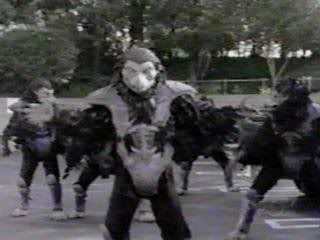
Tengu, the homeworld of the Tenga species, is located deep within the Vile Imperium. Shortly after the SPD Civil War, the Confederacy granted refuge to a Tenga refugee ship fleeing Vile space, asking for sanctuary. They were granted a habitable colony world in the Sextans A galaxy on the edge of the local group, and their numbers have since swelled as for the first time, the Tenga population has a location to escape to. Many have simply grown tired of being oppressed by Master Vile, his transgressions ranging from enslaving the populace for manual labor to taking whole nests of eggs for use as shocktroops in his army. Since the founding of the colony, the Tenga refugees have taken a number of other nearby worlds to solidify their position.
Due to the history of the Tenga as shocktroops for the Vile Imperium, the Confederacy was initially very reluctant to allow them sanctuary, but eventually the voice of empathy won out over distrust, and the Confederacy allowed for the creation of the colony. Tengetii, the new capital of the United Tenga Colonies, orbits a red dwarf star. The world is cool, with large icecaps and a tropical region that is temperate at best. Tidally locked so that one side is always facing the sun, massive winds crosscross the planet, allowing for the temperature on both the light and dark side of the planet to be regulated.
Much of traditional Tenga culture is virtually extinct thanks to hundreds of years of oppression by the Imperium. The refugees have had to come to terms with this now that they have time to think and room to grow, and have since begun adopting foreign ways. The Tenga have been collecting culture from the rest of the Confederacy, and combining it in a strange hodgepodge of ideas, alongside what they have been able to dig up of their old culture.
Tengas are hatched from eggs, which are placed in the village nest. The eggs hatch four times a year, of which each event is marked by a ritual, where parents are assigned to the hatchling, assuring that all members of the village do their part. Larger settlements like cities are subdivided into village-sized groups. Each village is designed to be a self-sufficient cell, an artifact from the Vile occupation when contact with other groups was unreliable at best and self-preservation was at an all-time high. To keep from losing it, the Tenga became heavily involved with their fellow prisoners, which became their village.
The colonies are currently headed by a weak provisional government headed by the command crew of the original refugee ship, though elections for a republic-style government is planned as soon as things begin to settle down and the colonial infrastructure is more solidified.
The Tenga fleet currently consists mostly of surviving refugee vessels outfitted for combat and hijacked Imperium warships.

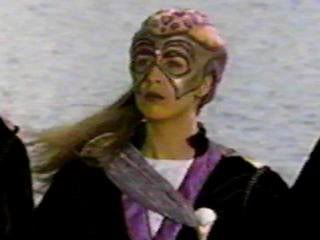
No comments:
Post a Comment